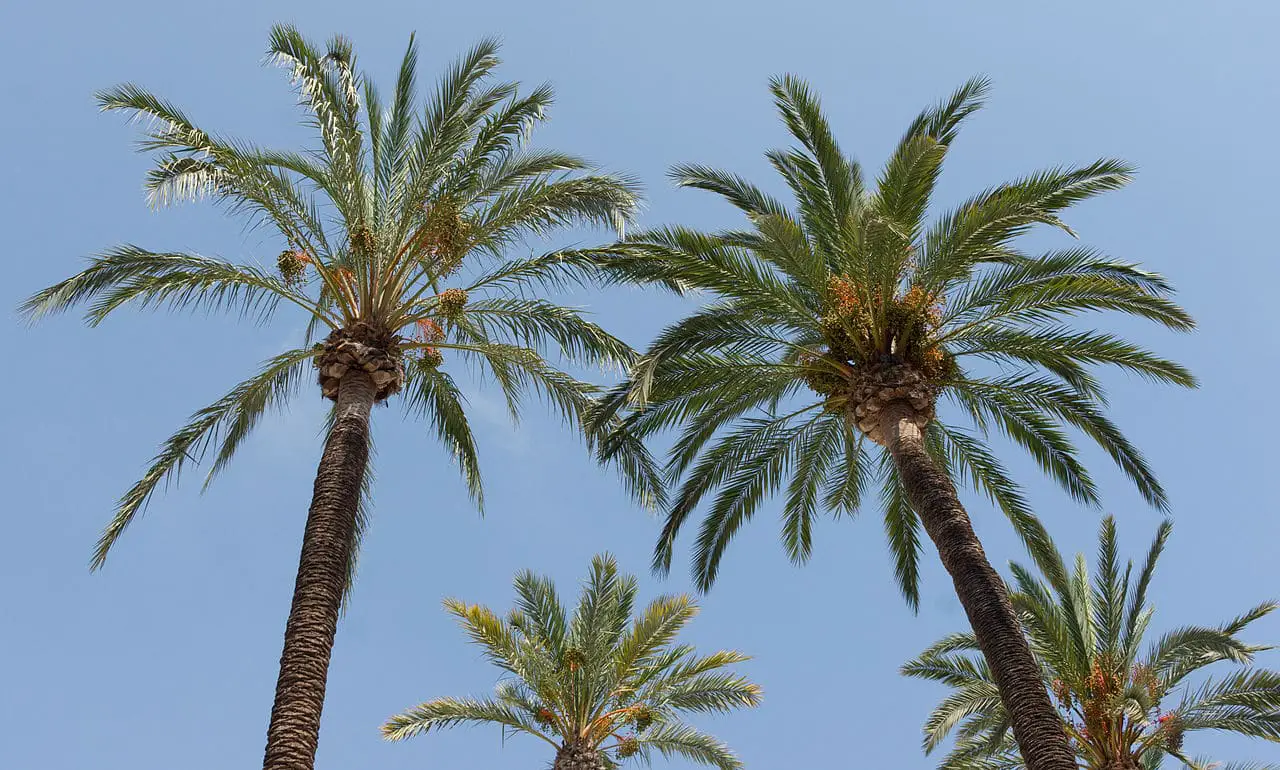

Image – Wikimedia Commons / Jebulon
The word ‘bud’, when referring to plants, can have several meanings. Two of them are very, very well known, but others are not so well known.
Knowing the different definitions of this term is interesting, since it helps us discover things about plants that, perhaps, we were not clear about what they were. So let’s go.
When it comes to plants, the word bud has six different meanings:
Bud of a palm tree
In the botanical sense


There are many palm trees that have buds, but they are all part of the genus Phoenix. The date palm, the Canary Island palm, the Senegal palm … they all have in common a curious structure that joins the leaves with the stipe (or false trunk, although many call it a trunk even though it is not actually such).
This bud it is made from the bases of the leaves that have been falling (or being cut), it has a rounded shape and it is fibrous. This is the part that protects the guide or growth point, called the apical meristem.
If you suffer any significant damage (for example, if you have Red weevil o paysandisia, or if lightning strikes it), the plant will die unless it has multiple stipes, in which case only the one with the damage will dry up.
In popular culture


Continuing with the palm trees, the word cogollo is used a lot in Venezuela to refer to the leaves of the Phoenix dactylifera (datebook) when used to make what they call the bud hatwhich is the most traditional in that country.
From the image, it is deduced that it is comfortable to wear, and light. It has a certain resemblance to the hats that were used, and are used today in Spain when cotton was going / going to be collected in the fields to protect from the sun.
Bud


Returning to botany, the word bud is sometimes used to refer to the buds of plants. A bud is an organ that forms at the end of the branches, and that ends up turning into leaves or flowers. In general, if they are leaves (foliferous) they are green, but the color may vary depending on the species, or if they are flowers (floriferous).
Furthermore, they can be classified in different ways. For example, according to its functiona bud can be vegetative, that is, it is only responsible for producing leaves; reproductive, when it produces flowers; or mixed.
On the other hand, they can also be classified according to your position: terminal (at the tip of a branch), axillary (at the axil of a leaf) or adventitia (on the trunk or roots); and according to its morphology: scaly (it occurs when the scales cover and serve as protection to the developing parts); naked (when it does not have scales to protect it) and hairy (when it is covered by hairs).
Although that’s not all. They can also be classified according to condition and / or utility. Thus, it can be a dormant or dormant yolk; an “accessory” when it is a secondary bud that is part of a main bud; or a pseudo-terminal, when a terminal bud is replaced by an axillary one.
Outbreak


Image – Wikimedia / Dbxsoul
Bud and bud are two terms that are closely related in botany, so it is not surprising that the term bud is sometimes used to talk about buds. But what is this?
Well then. An outbreak can be:
- A newly germinated seedwhich has already started to grow upwards but has not yet developed the leaves.
- New growth of perennials. These can be leaves, stems and / or new buds.
Set of flowers


And we end the article talking about one of the definitions of bud most understood by the population: the one that refers to flowers. You may have heard of marijuana bud, right? But actually that word is used when talking about neither more nor less than a set of flowers, regardless of the plant. This set has a technical name: inflorescencewhich is formed by female, male or both flowers, or hermaphrodites.


Related article:
What are inflorescences?
Three different types are known:
- Racemoses / racemoses: are those in which all the flowers appear on the sides of the stem that forms said inflorescence, which can have the shape of a spike, raceme, umbel or chapter.
- Closed / cimosas: they are similar to the previous ones, but in them a stem first arises from which a flower will sprout, and from this stem others will sprout.
- Specials: they are those that do not fit neither in the bunches nor in the closed ones. Two are distinguished:
- Sicono: the floral stem is fleshy, and the same number of flowers sprout in each of the inflorescences. These are unisexual. Ficus have sycons.
- Ciatus: the floral stem is also fleshy, but there are 5-7 male flowers and 1 female in the center. It is typical of the Euphorbia.
What did you think of this topic?

